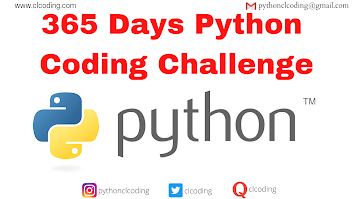Artificial Intelligence has shifted from academic curiosity to real-world impact — especially with large language models (LLMs) like GPT-series, BERT, and similar. Generative AI doesn’t just classify or predict — it creates: generating content, answering questions, summarizing text, drafting emails, and even building software. But powerful as these models are, they are most useful when they can access specific knowledge and be orchestrated intelligently in applications.
That’s where Retrieval-Augmented Generation (RAG) comes in — a method for combining generative AI with external knowledge sources like documents, databases, wikis, and company manuals to produce accurate, context-aware outputs.
Generative AI and RAG for Beginners is a practical, step-by-step guide that demystifies these techniques and shows you how to build real, working applications using Python and LangChain — a flexible framework for developing LLM workflows.
What This Book Covers — Step-by-Step and Hands-On
Here are the core parts of what the book teaches:
1. Foundations of Generative AI and LLMs
Before you write a line of code, the book helps you understand:
-
What generative AI is and how it works
-
How LLMs process and generate language
-
Strengths, limitations, and responsible use
This lays a conceptual groundwork so you know not just how but why the techniques work.
2. Getting Started with Python & LangChain
LangChain has quickly become one of the most popular frameworks for building LLM-based workflows. The book walks you through:
-
Setting up a Python environment
-
Installing LangChain and key dependencies
-
Connecting to LLM APIs (e.g., OpenAI, Azure, etc.)
-
Running basic prompts and responses
This gives you a hands-on starting point with practical code examples.
3. Introducing RAG (Retrieval-Augmented Generation)
RAG solves a key problem: most LLMs excel at general knowledge, but they can struggle when you need to infuse domain-specific knowledge — like company policy, medical info, product manuals, or legal documents.
In this section, you’ll learn:
-
How RAG works: combining retrieval with generation
-
How to index text (documents, PDFs, web pages)
-
How to build vector stores and embedding databases
-
How to query and retrieve relevant data before generating answers
With RAG, your AI isn’t guessing — it’s grounded in real, specific information.
4. Building Practical Applications
Theory becomes powerful when you can apply it. The book shows you how to build real LLM applications such as:
-
Knowledge assistants that answer questions from specific documents
-
Chatbots that reference internal company wikis
-
Summarizers that condense customer support logs
-
Search interfaces that retrieve and explain relevant content
Each example includes code you can run, modify, and adapt.
5. Deployment and Integration
Beyond just building, you’ll learn:
-
How to deploy your application
-
How to integrate models into workflows or APIs
-
How to handle user inputs, manage sessions, and scale your solutions
This preps you for production use — not just experimentation.
6. Responsible AI and Best Practices
The book also covers:
-
Ethical considerations (bias, safety, hallucinations)
-
Guardrails for reliable outputs
-
Monitoring and evaluating model behavior
These are important for any real-world AI solution.
Who This Book Is For — Ideal Readers
This book suits:
- Beginners in AI and Python who want a practical pathway into generative systems
- Developers and engineers who want to build intelligent AI products
- Students and self-learners seeking project-oriented AI skills
- Product builders & entrepreneurs aiming to integrate AI into applications
- Professionals curious about RAG and LLM workflows without deep prior theory
If you have basic programming familiarity (especially in Python), this book takes you a step further into applied AI engineering.
Why This Book Is Valuable — Its Strengths
Hands-On and Practical
The book doesn’t just talk about concepts — it shows you working code you can run, explore, and extend.
Build Real Applications
By the end, you’ll have LLM systems that do more than echo back prompts — they respond based on real knowledge, tailored to domain needs.
LangChain Focus
LangChain is fast becoming the de-facto framework for chaining model calls, retrieval, memory, and execution — making your work future-proof.
RAG in Action
Retrieval-Augmented Generation is one of the most valuable patterns in modern AI — essential for building accurate, contextually aware assistants and tools.
Accessible for Beginners
The language, examples, and explanations stay friendly — the focus is on learning by doing.
What to Keep in Mind
-
Running large models and embeddings often requires API keys and can incur cost — so budget accordingly.
-
RAG systems depend on good indexing and retrieval — quality of data inputs matters.
-
Dealing with noisy, unstructured text requires care: clean, labeled data leads to better results.
-
While the book is beginner-friendly, some experience with Python and basic ML concepts helps accelerate your learning.
What You Can Build After Reading This Book
Once you’ve worked through it, you’ll be well-positioned to build projects like:
-
AI chat assistants that answer domain-specific questions
-
Document summarizers for knowledge workers
-
RAG-powered search engines
-
Intelligent support bots for websites and apps
-
Tools that synthesize insights from large text collections
This portfolio potential makes it valuable both for learning and career growth.
Hard Copy: Generative AI and RAG for Beginners: A Practical Step-by-Step Guide to Building LLM and RAG Applications with LangChain and Python
Kindle: Generative AI and RAG for Beginners: A Practical Step-by-Step Guide to Building LLM and RAG Applications with LangChain and Python
Conclusion
Generative AI and RAG for Beginners isn’t just a book — it’s a hands-on launchpad into one of the hottest tech areas today: building intelligent applications that combine language understanding and domain knowledge.
With Python and LangChain as your tools, you’ll learn how to go beyond prompts and build systems that actually understand context, retrieve relevant information, and generate accurate answers.




















.png)






.png)























